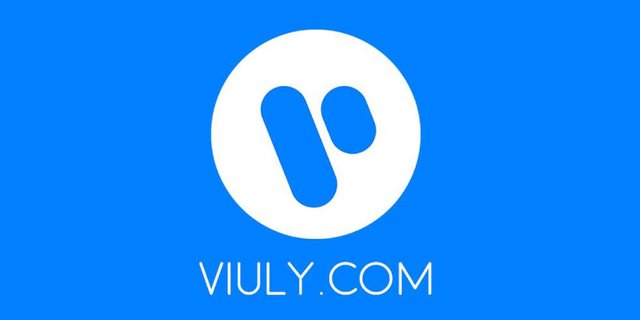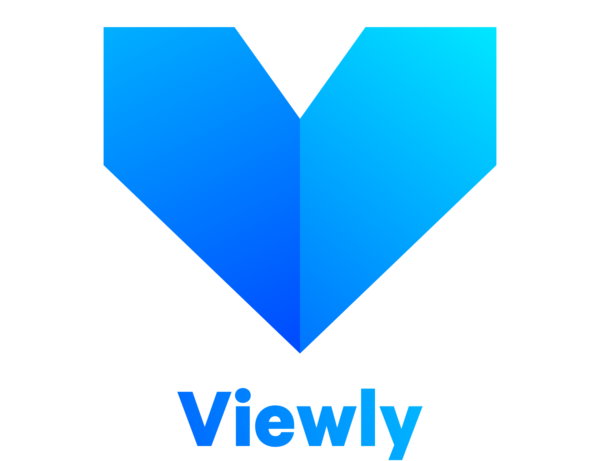
As we speak there are a few decentralized blockchain based versions of Youtube available that we are aware of. The main ones making waves (and money for users) are DTube, DLive, Viuly, Viewly and Bit.Tube.
Although in their infancy, these platforms are attracting attention. Upon a little digging it appears that a fair amount of content creators are shifting over to these platforms. And many of these content creators and vloggers are doing so despite having no knowledge of crypto, blockchain, or decentralization.
This is kind of surprising. Complete novices in wallet creation, exchange usage and cryptocurrencies in general, are choosing to use a platform for their videos where they are forced to take the learning curve.
Why?
The answer is pretty simple.
The YouTube Dream is Not What it Was
It’s no secret. Add rates are dropping. Content creators are in many instances being paid less and less per impression. Combine this with Youtube’s new regulations on what vloggers need to achieve before being able to monetize – and uploading content there becomes less and less appealing to the average creator.
Furthermore, an additional factor is making youtube earnings even lower. It is the fact that most ads served on Youtube videos do not get viewed. This is due in part to the lovely (for viewers) ‘skip ad’ button, which most viewers, understandably, click to get on with watching the video they have selected. The other factor which is reducing the amount of ads viewed are ad blockers. Many internet users have an ad blocker installed, and once again, this is completely understandable.
To really get an idea how this is impacting hard working Youtubers, let’s take a look at the numbers.
1 million views does not = big bucks anymore
As you are probably aware, income from online advertising revenue is based on CPM. This is the cost per thousand, or what you are paid for every 1 000 views of an ad. The CPM you get will fluctuate based on whether a high paying or low paying add is shown to your viewer.
But on average a conservative CPM is around $2.00. If you multiply this by a million views:
1 million views x ($2/1000 views) =$2000
This still looks good, but don’t forget all the viewers who are clicking ‘skip ad’, and all the viewers who have their adblock on. On average it is likely that less than 15% of youtube viewers are actually watching the adds. So, a little more maths…..
150,000 views x $2/1000 views =$300
And don’t forget, a million views on a Youtube account used to be what fairytales were made of! Now, it could equate to a mere $300.
Looking at these low earnings, it makes total sense why a content creator or vlogger might be looking for greener pastures in the decentralized arena.
Which brings us to the next question. What are these decentralized new Youtubes, how do they work, and are they in fact better?

The Pros & Cons of the New Decentralized YouTubes
As you will see, the decentralized new “Youtubes” / video sharing platforms offer some pretty exciting prospects. For one, a few of them do not even use the ad serving revenue sharing model, and are completely ad free. In an age where our time and attention is precious, many vloggers find this very attractive, as they themselves do not like the idea of subjecting their audiences to advertising.
The earnings themselves on the decentralized platforms are thought to be higher (in relation to views). This is thanks to the fact that automation and decentralisation means that more money can go directly to content creators, and less to the platform. Decentralization also makes peer-to-peer tipping and subscription based payments possible, with no middle man.
Another desired factor is that thanks to its blockchain base, a decentralized video sharing platform cannot be censored. Which speaks to the ideal of freedom of speech and the spread of information. Any video uploaded is permanent, and while it can be hidden by the uploader, it cannot be deleted by the platform. This of course raises other issues in terms of illegal / inappropriate content being served to unsuspecting users. However it must be said that the user based system of upvoting and downvoting (similar to Reddit) has been fairly functional in some cases in the curation and minimization this issue.
Besides these there are of course other pros and cons and as the different platforms available to date have differing features, let’s take a look at them individually.
DTube

Built on the SteemIt framework, DTube is very similar in look and feel to Youtube itself. The one big difference however is that it is completely add free. So how does anybody earn anything?
The key to this lies in SteemIt’s remarkable token creation and distribution platform. To put it very simply, the steemIt tokens that are mined get distributed through the creation of content on the SteemIt network. Based on the level of engagement and upvotes, the content creators are automatically rewarded in Steem tokens. These Steem tokens can then be held to increase in value, or sold on an online exchange for bitcoin, other cryptocurrencies or cash.
There is a catch however, and that is that content only earns Steem tokens for 7 days after it is published. This is neccesary in order for the network to function properly. However it is a bit of a downer for a content creator, especially those who create long form video. Video typically takes many hours to shoot and edit. The reward to this is that video is generally expected to generate views and income for a good length of time after being uploaded to a creator’s channel.
However it is worth noting that not all videos will automatically generate less income long term on DTube . Videos on very current topics which are unlikely to be evergreen may be a good fit. Video content which is in short form could also potentially earn enough in the 7 days earning period to make DTube a viable platform for uploading.
Another way to earn on Dtube is by upvoting and downvoting. Participating with other people’s content will earn you tokens as well. This is because up and downvoting is an essential part of the moderation process which keeps the platform ‘clean’.
As for where the video files are stored, the live on the IPFS (or InterPlanetary File System). They reside there for free for up to 56 months, after which point in time users pay for the storage.
Pros:
- Ad free
- No initial barriers to earning. Uploaders do not need a certain amount of subscribers or views to qualify to earn.
- Payment goes directly to content creators, 7 days after uploading
- Website is in development, meaning improvements may be on the way...
Cons:
- Uploaders are only paid for the first 7 days of user engagement after uploading (this applies to all of SteemIt)
- At moment videos are not able to be embedded
- Small audience/user base at present
- Website still in development and some features may be glitchy.
Best For
Content creators who want to start earning straight away with non-live streamed content and do not want to serve ads. Well suited to shorter video content, which requires less time to produce, and content which is of a current or short term nature. Uploaders who create long videos and videos which are designed to be evergreen may suffer under the 7 day earning system of the SteemIt ecosystem.
DLive

DLive is very similar to DTube, however it offers a live streaming function. Like DTube, DLive is built on the SteemIt blockchain. It also rewards users in Steem tokens, is ad free and and the content is immutable thanks to the blockchain basis on which it is built. Files are stored on the IPFS (or InterPlanetary File System).
Pros:
- Ad free.
- Streaming function available.
- No initial barriers to earning. Uploaders do not need a certain amount of subscribers or views to qualify to earn.
- Payment goes directly to content creator, 7 days after uploading
- Website is in development, meaning improvements may be on the way
Cons:
- Uploaders are only paid for the first 7 days of user engagement after uploading (this applies to all of SteemIt)
- At moment videos are not able to be embedded
- Streaming can be slow
- Small audience/user base at present
- Website still in development and some features may be glitchy
Best For
Content creators who do a fair amount of live streaming, wish to start earning immediately with no barriers, and do not want to serve ads. Well suited to shorter video content, which requires less time to produce, and content which is of a current or short term nature. Uploaders who create long videos and videos which are designed to be evergreen may, again, suffer under the 7 day earning system of the SteemIt ecosystem.
Viuly

Viuly is another video sharing platform, this time run on the Ethereum network, and using its own smart contract token, VIU. Like DTube and DLive it uses the IPFS (or InterPlanetary File System) to store content. Unlike DTube and DLive, uploaders can earn revenue through ad placement if they wish. Content does not automatically earn tokens as with DTube and DLive. With Viuly, uploaders can choose whether they want to serve ads, charge a subscription for premium content, and/or simply request that viewers use the donate button.
Like with DTube and DLive viewers on Viuly can also earn. When watching content which has any ad placements, viewers earn up to 25% of the cost of the ad. For promotional videos (placed and created by advertisers) viewers earn up to 90% of the cost of the ad.
Pros:
- Videos earn for their entire lifespan
- No initial barriers to earning. Uploaders do not need a certain amount of subscribers or views to qualify to earn.
- Payment goes directly to content creator
- Content creators can choose between serving ads, relying on donations or creating subscription packages
- Viuly is implementing an initial screening process on videos uploaded, meaning content is of a high quality and
inappropriate content is screened out - Website is in development, meaning improvements may be on the way.
Cons:
- Uploaders have to rely on traditional forms of revenue streams for content, ads, donations and subscriptions
- At moment videos are not able to be embedded
- Streaming can be slow depending on your internet speed
- Small audience/user base at present
- Website still in development as as such some features may be glitchy
Best For
Content creators who are interested in serving ads, as well as creating subscriptions and tipping incentives, and wish to participate in a more conventional feeling platform with the benefits of decentralization. Also suited well to those who wish to build up a base of video content which will generate passive income on a long term basis. For content creators who upload long form videos or content that is designed to be evergreen, Viuly may be a more profitable alternatitve than DTube and DLive.
Viewly

Viewly is another decentralized video sharing platform which is built on the ethereum blockchain. Content creators are rewarded in VIEW tokens. There are no ads, and monetization can be structured by content creators in the form of incentives, subscriptions, tips etc. Content creators are also free to organise their own sponsorship for videos.
Pros:
- No ads
- Content creators control pricing and donation incentives
- No initial barriers to earning. Uploaders do not need a certain amount of subscribers or views to qualify to earn.
- Payment goes directly to content creator, with no middleman
- Website is in development, meaning improvements may be on the way.
Cons:
- Embedding of videos is not yet faciliated
- Streaming can be slow depending on your internet speed
- Small audience/user base at present
- Website still in development as as such some features may be glitchy
Best For
Content creators who do not want to serve ads, and wish to structure their own incentives and prices for viewing their content.
Bit.Tube

Bit.Tube is yet another decentralized video sharing platform, using the IPFS (or InterPlanetary File System) to store files. It is uncensored, ad free and users can begin earning right away. Bit.Tube users are rewarded with TUBE token. 90% of all mined TUBE tokens are distributed to users, and the remaining 10% is utilized by the platform.
Unfortunately viewers on Bit.Tube are not rewarded for upvoting and downvoting content (as with DTube and DLive). This has resulted in a certain amount of low grade content.
Pros:
- No ads
- Content creators earn automatically
- No initial barriers to earning. Uploaders do not need a certain amount of subscribers or views to qualify to earn.
- Website is in development, meaning improvements may be on the way.
Cons:
- Due to non censorship content may be inappropriate or of an illegal nature
- Embedding of videos is not yet faciliated
- Streaming can be slow depending on your internet speed
- Small audience/user base at present
- Website still in development as as such some features may be glitchy
Best For
Content creators who do not want censorship and do not want to serve ads.
Current Top Decentralized Video Sharing Platform
As these decentralized video sharing platforms are still in their development phase and overall infancy, singling out one or the other as the ‘best’ forever platform is not really of value. In addition to these listed and functioning platforms, there are a bunch of contenders being developed such as Videocoin, Theta and Livepeer to name but a few. So only time will tell as to which ones will actual function as strong contenders in the online video sharing space.
However it is worth considering which platforms are the most functional at the present moment, as there are growing numbers of people wanting to switch over from Youtube and obviously wish to choose wisely when they do.
Are Decentralized “Youtubes” Better?
As stated by the developer of Dtube, Youtube has tiers of programmers and developers in its employment. This sheer manpower makes giants like Youtube able to offer superb functionality and ease of use. As of yet, decentralised platforms do not generally have this kind of input behind them. And ‘glitchyness’ in a platform can easily discourage new users, especially those who vlog or create video content on a semi professional scale. However development of the decentralized alternatives is moving quickly, and we can probably expect to see some serious decentralised contenders in the online video platform space.
Thanks to the increasing difficulty for content creators to earn an income from their channels on Youtube, many are leading the way as we speak, to fairer, blockchain based, platforms. This will probably play a key role in the growth of these platforms, as established influencers often have significant audiences. If these audiences follow the content creators over to decentralised systems, more creators will in turn join in, and creating a knock on effect.
✅ Enjoy the vote! For more amazing content, please follow @themadcurator for a chance to receive more free votes!
Downvoting a post can decrease pending rewards and make it less visible. Common reasons:
Submit
Congratulations @heavens9881! You have completed the following achievement on the Steem blockchain and have been rewarded with new badge(s) :
Click here to view your Board
If you no longer want to receive notifications, reply to this comment with the word
STOPDownvoting a post can decrease pending rewards and make it less visible. Common reasons:
Submit
Hello @heavens9881! This is a friendly reminder that you have 3000 Partiko Points unclaimed in your Partiko account!
Partiko is a fast and beautiful mobile app for Steem, and it’s the most popular Steem mobile app out there! Download Partiko using the link below and login using SteemConnect to claim your 3000 Partiko points! You can easily convert them into Steem token!
https://partiko.app/referral/partiko
Downvoting a post can decrease pending rewards and make it less visible. Common reasons:
Submit
Congratulations @heavens9881! You received a personal award!
You can view your badges on your Steem Board and compare to others on the Steem Ranking
Vote for @Steemitboard as a witness to get one more award and increased upvotes!
Downvoting a post can decrease pending rewards and make it less visible. Common reasons:
Submit